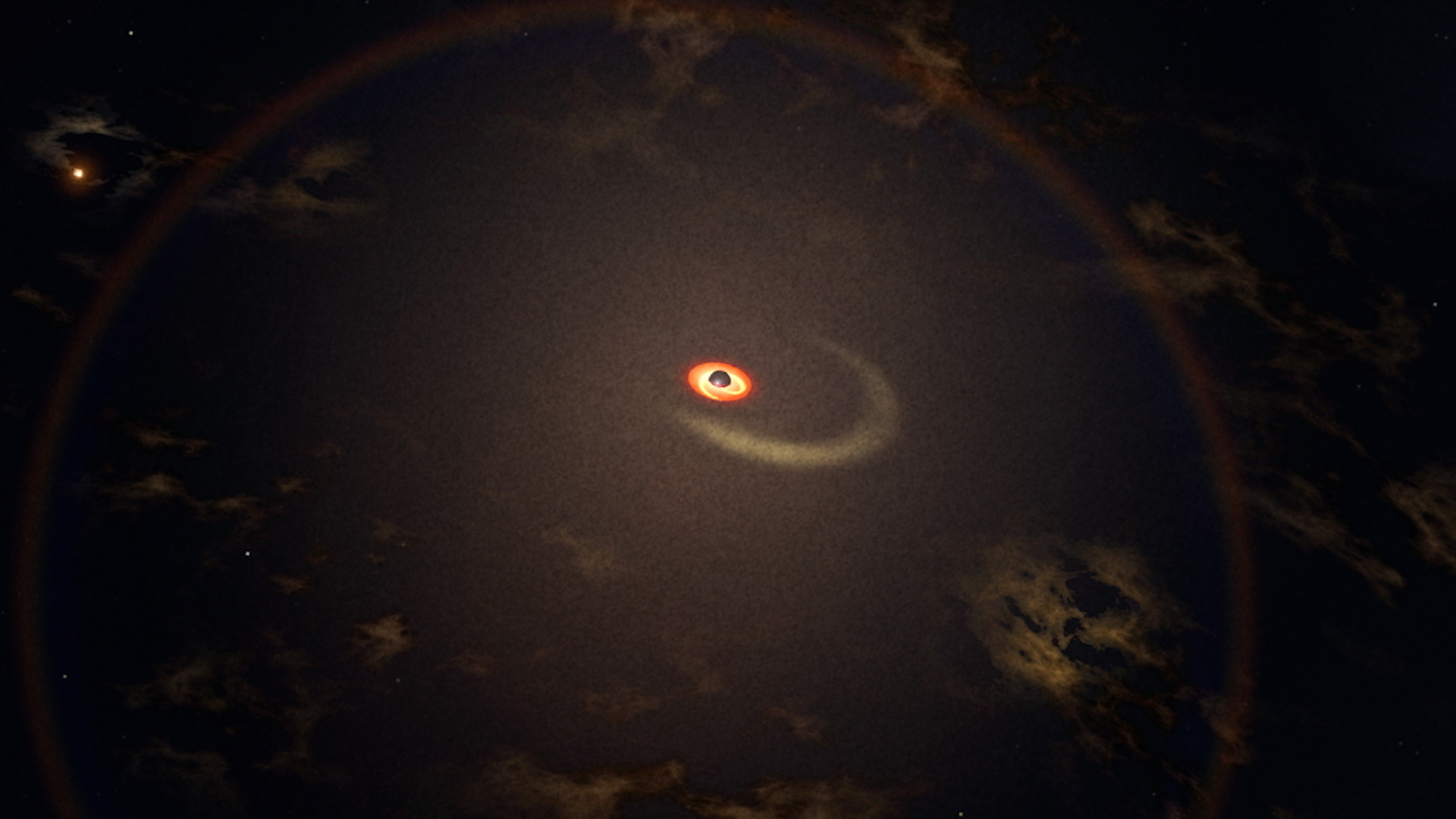Swift, TESS Catch Eruptions from an Active Galaxy
Watch as a monster black hole partially consumes an orbiting giant star. In this illustration, the gas pulled from the star collides with the black hole’s debris disk and causes a flare. Astronomers have named this repeating event ASASSN-14ko. The flares are the most predictable and frequent yet seen from an active galaxy.
Credit: NASA’s Goddard Space Flight Center
Music: "Ruminations" from Universal Production Music
Complete transcript available.
Using data from facilities including NASA’s Neil Gehrels Swift Observatory and Transiting Exoplanet Survey Satellite (TESS), scientists have studied 20 instances and counting of regular outbursts of an event called ASASSN-14ko.
Astronomers classify galaxies with unusually bright and variable centers as active galaxies. These objects can produce much more energy than the combined contribution of all their stars, including higher-than-expected levels of visible, ultraviolet, and X-ray light. Astrophysicists think the extra emission comes from near the galaxy’s central supermassive black hole, where a swirling disk of gas and dust accumulates and heats up because of gravitational and frictional forces. The black hole slowly consumes the material, which creates random fluctuation in the disk’s emitted light.
But astronomers are interested in finding active galaxies with flares that happen at regular intervals, which might help them identify and study new phenomena and events.
ASASSN-14ko was first detected on Nov. 14, 2014, by the All-Sky Automated Survey for Supernovae (ASAS-SN), a global network of 20 robotic telescopes. It occurred in ESO 253-3, an active galaxy over 570 million light-years away in the southern constellation Pictor. At the time, astronomers thought the outburst was most likely a supernova, a one-time event that destroys a star.
Six years later, scientists examined the ESO 253-3 ASAS-SN light curve, or the graph of its brightness over time, and noticed a series of evenly spaced flares – a total of 17, all separated by 114 days. Each flare reaches its peak brightness in about five days, then steadily dims.
They predicted that the galaxy would flare again on May 17, 2020, so they coordinated joint observations with ground- and space-based facilities, including multiwavelength measurements with Swift. ASASSN-14ko erupted right on schedule. Subsequent flares were predicted and observed on Sept. 7 and Dec. 20.
Using measurements of these and previous flares from ASAS-SN, TESS, Swift and other observatories, including NASA’s NuSTAR and the European Space Agency’s XMM-Newton, scientists propose the repeating flares are most likely a partial tidal disruption event.
A tidal disruption event occurs when an unlucky star strays too close to a black hole. Gravitational forces create intense tides that break the star apart into a stream of gas. The trailing part of the stream escapes the system, while the leading part swings back around the black hole. Astronomers see bright flares from these events when the shed gas strikes the black hole’s accretion disk.
In this case, the astronomers suggest that one of the galaxy’s supermassive black holes, one with about 78 million times the Sun’s mass, partially disrupts an orbiting giant star. The star's orbit isn’t circular, and each time it passes closest to the black hole, it bulges outward, shedding mass but not completely breaking apart. Every encounter strips away an amount of gas equal to about three times the mass of Jupiter.
In this illustration, a supermassive black hole pulls a stream of gas off a star that passes too close.
Credit: NASA’s Goddard Space Flight Center/Chris Smith (USRA/GESTAR)
A monster black hole siphons gas off of a giant star each time the star passes closest in this illustration. The gas pulled from the star collides with the black hole’s debris disk and causes a flare of light.
This listing includes versions without labels or the graph.
Credit: NASA’s Goddard Space Flight Center/Chris Smith (USRA/GESTAR)

The active galaxy ESO 253-3 is the first one shown to produce regularly recurring flares. The galaxy is located over 570 million light-years away in the southern constellation Pictor. The European Space Observatory’s Multi Unit Spectroscopic Explorer captured this image as part of the All-weather MUse Supernova Integral-field of Nearby Galaxies (AMUSING) survey.
Credit: Michael Tucker (University of Hawai’i) and the AMUSING survey
Credits
Please give credit for this item to:
NASA's Goddard Space Flight Center
-
Producer
- Chris Smith (USRA)
-
Science writer
- Jeanette Kazmierczak (University of Maryland College Park)
-
Animator
- Chris Smith (USRA)
-
Scientist
- Anna Payne (University of Hawaiʻi at Mānoa)
Release date
This page was originally published on Tuesday, January 12, 2021.
This page was last updated on Wednesday, May 3, 2023 at 1:44 PM EDT.
